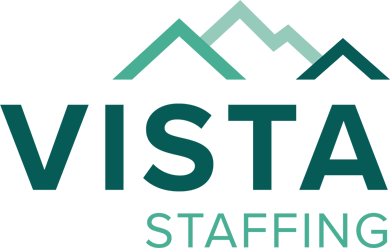The CFO’s Guide to Healthcare Cost Containment
 Download PDF
Download PDF

Being a Chief Financial Officer (CFO) in the healthcare industry is tough. You’re under extraordinary pressure to control costs without compromising patient care quality. You have to tackle challenges like revenue losses, reductions in government funding, and staff burnout, which leads to high onboarding expenses.
To navigate these challenges, strategic partnerships like those with VISTA offer valuable solutions, including centralized vendor management and workforce optimization.
Looking ahead, trends such as the growing demand for advanced practitioners and the proactive approach of forward-thinking CFOs are reshaping the future of cost containment.
Top Challenges in Healthcare Cost Containment
Healthcare CFOs encounter several cost containment challenges:
- Revenue Losses: The COVID-19 pandemic led to significant financial losses for hospitals. The American Hospital Association estimated a loss of over $200 billion. And many hospitals are still trying to stabilize their operating margins in our post-COVID world.
- Reduction in Government Funding: Decreasing government funds force CFOs to reassess spending models to sustain long-term operations.
- Staff Burnout: High levels of burnout among healthcare providers result in increased turnover and expensive onboarding processes, which can cost between $400,000 and $600,000 per physician replacement.
- Increased Pay Demands: Healthcare workers feel underpaid, leading to demands for higher salaries, which can further strain hospital budgets.
VISTA’s Approach to Cost Savings
VISTA offers a strategic solution to these challenges through a centralized and standardized approach to vendor management and workforce optimization. Here’s how:
- Vendor Management: By centralizing vendors and standardizing billing processes, VISTA helps reduce labor costs and eliminate unnecessary fees.
- Workforce Optimization: VISTA’s Workforce Optimization Review identifies hidden costs to help you reduce expenses effectively. You might be surprised to find out what you’re overspending on!

Future Trends in Cost Containment
Looking ahead, several trends are expected to influence healthcare cost containment:
- Telehealth: Telemedicine’s role has expanded, and its future will largely depend on reimbursement trends.Advanced
- Practice Providers (APPs): The demand for APPs like Nurse Practitioners is growing, as they are cost-effective and help address staffing shortages.
- Proactive CFOs: Successful CFOs are those who adapt to trends, foresee challenges, and form strategic partnerships to achieve long-term fiscal goals.
Enhance Your Cost Management Strategies
Download the full guide to explore strategies and comprehensive solutions for healthcare cost containment. This resource will equip you with the knowledge to navigate the complex financial landscape of healthcare effectively.



